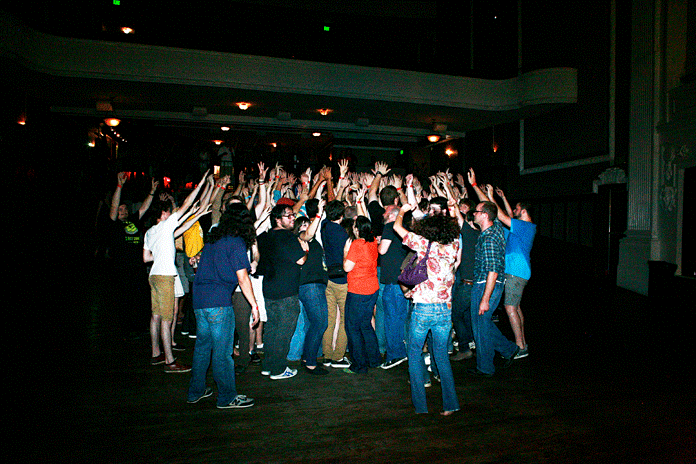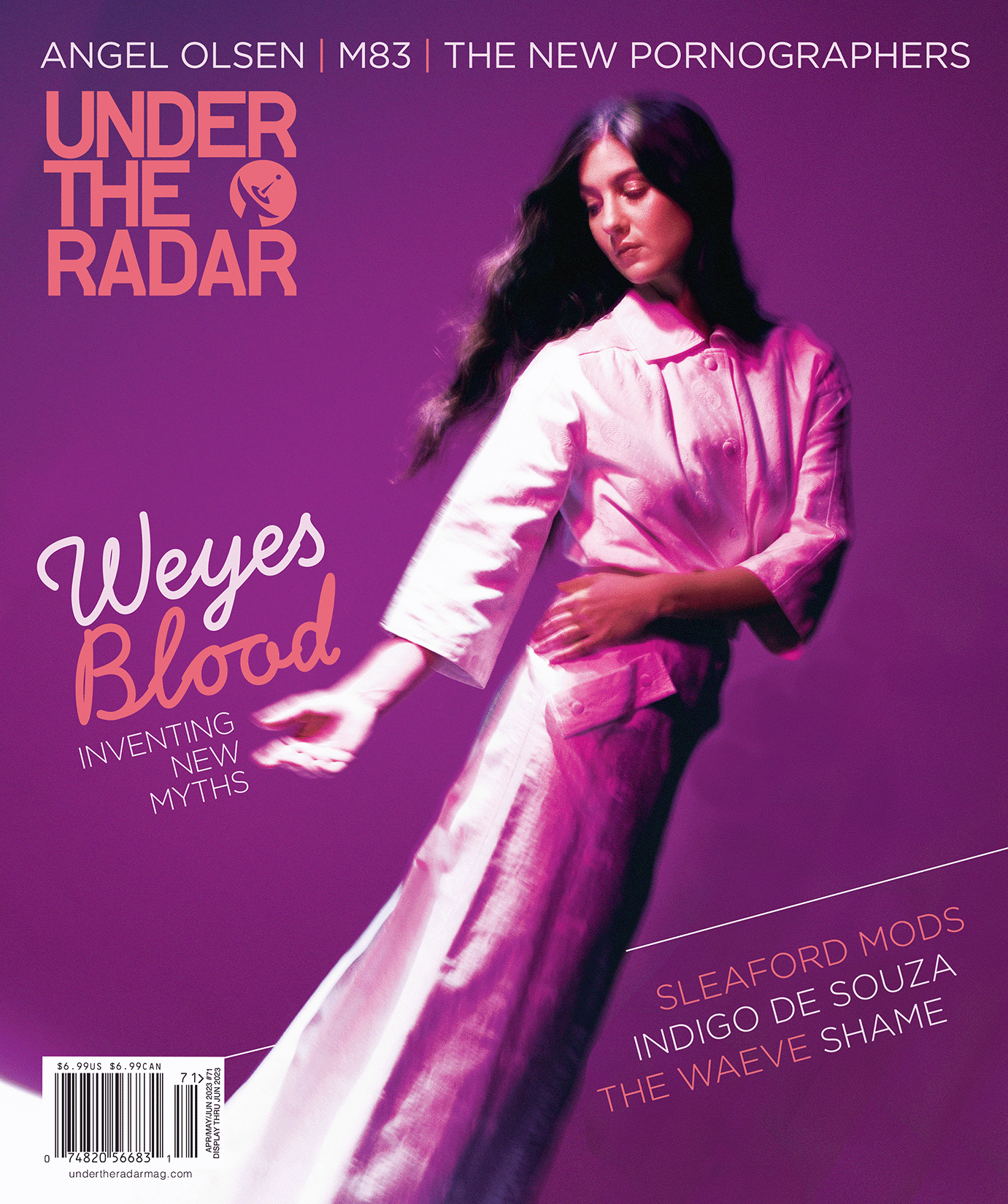
Dan Deacon
Live at the Jefferson Theater, Charlottesville, VA, September 8, 2012,
Sep 21, 2012
Photography by Wendy Lynch Redfern
Dan Deacon
![]()
Being at a Dan Deacon concert is like being at a kid’s birthday party made for adults. Only instead of a clown making balloon animals, the crowd is treated to a bearded man with oversized glasses screaming voice modulated squeals into a microphone while shaking his hand in front of him like he’s flicking water into someone’s face. Deacon is well known for his participation-based shows, and for spending them on the floor with the audience. This time, however, he stayed on stage with the three other musicians who accompanied him—something he lamented when patrons couldn’t quite grasp what he was trying to get them to do throughout the show. “Damn it, this is so much easier when I’m down there. Parallel to the stage—there you go,” he says.
Labeling the show as participatory is a bit of an understatement. Deacon plays the audience like a performance art experiment, shouting out instructions muddled with nonsense ramblings, like E. E. Cummings standing in as a hoedown caller.
“Put the hat in the pig!” he repeats several times, as the audience is kneeling on the floor. “Point at the ceiling, find the room you want to live in on the ceiling, find it and point at it.” The audience obeys, giggling with hands stretched in the air pointing at the ceiling. “Now find the one guy who isn’t doing this, and point at him. Repeat after me.”
The crowd repeats, and everyone turns and points their fingers at the sole standing man toward the back, and Deacon has everyone ask for his Netflix password.
“Now give me ten shoes and five hats,” Deacon shouts, and the crowd starts counting off, “Shoes! Shoes! Shoes!”
Then the music begins, and the crowd is up and dancing to the lunatic drones of noise and layers of digital melody bellowing through the theater. A plastic glow in the dark skull fitted with a strobe light keeps up with the tempo, while a backdrop of psychedelic static plays on the screen at the back of the stage. Deacon is running his fingers along a soundboard rig and clutching the microphone to his face and occasionally looking up and shaking his hand in the air. Several dozen fans mimic his hand movements accordingly. Also on stage is a pair of drummers and opening act Chester Gwazda, standing next to Deacon with a similar setup. It’s difficult to tell if the vocals are coming from the stage or the crowd singing along, as the only words discernible from the onslaught of sound are drenched in glittery effects and pitched up several octaves to an indecipherable robotic wail.
Deacon introduces most of the songs with simple choreography instructions, like splitting the audience in two—“This side of the room has to dance like the mom from Big,” and organizing human tunnels that wrap up the stairs and around the bar, and stretching everyone out into a big circle.
“Everyone here has drank poison,” he tells the crowd in a circle, squeezing to the edges of the room. He picks one audience member to stand in the middle, “And she has the antidote, and she’ll give it to you by running around and touching your hands.” The girl in the middle immediately kicks off her shoes and starts running before he finishes his instructions, and Dan yells at her from the stage, “Stop it! No! Someone else jump in!” Eventually the music kicks off, and hands are outstretched as people run in the circle grabbing a hand or two and pulling them into the middle.
Deacon also tested his smartphone app, which the audience was instructed to download before the show started. Loading up the app turned the phone bright red, and when the designated song synchronized with the phones they all turned neon yellow. With the lights down, and touch screens shifting through different red, green, and purple hues, while alternately flicking camera phone flashes, the theater was reduced to a dim and calm ethereal glow, which complimented the mood nicely.
Before wrapping up the set with a trilogy of songs from his new record, America, Deacon pleads with the audience to exercise their voting rights. “There’s always someone who says ‘you’re a fucking idiot’ when I say, this. But this is something that is important to all of us, and we’re all effected by it. And that’s Major League Baseball.” After the laughs, Deacon continues, “Vote for Daffy Duck. Vote for Daffy Duck covered in dead Daffy Ducks. Vote for five Daffy Ducks. Vote for Ed Schrader.”
With that, Deacon launches into “USA” parts I, II, and IV. Deacon’s music has always been more akin to Brian Eno or Philip Glass than Daft Punk, and the backdrop of filtered landscapes set to the recurring minimalist theme from “USA” conjures images of Koyaanisqatsi. If Deacon’s music is indeed a protest, his methods of involvement and audience participation are a means to establishing a sense of solidarity. It’s fitting, then, that Deacon has been so welcome in the Occupy movement. If the message is as unclear, what does stand out is simply the innovation to do something old in a new way that brings people together. Deacon’s music-meets-social-movement parties can do just that, and it’s a blast in the meantime.
Most Recent
- Final Summer (Review) — Cloud Nothings
- Premiere: Mia Day Shares New Single “Mountain Song” (News) — Mia Day
- Tallinn Music Week, Tallinn, Estonia, April 3-7, 2024 (Review) — Virta, Musta Huone, Mari Kalkun, Sven Grünberg
- Picnic at Hanging Rock [4K UHD] (Review) —
- Joe Goddard of Hot Chip Announces New Album, Shares Video for New Song “Moments Die” (Feat. Barrie) (News) — Joe Goddard, Hot Chip


Comments
Submit your comment
There are no comments for this entry yet.